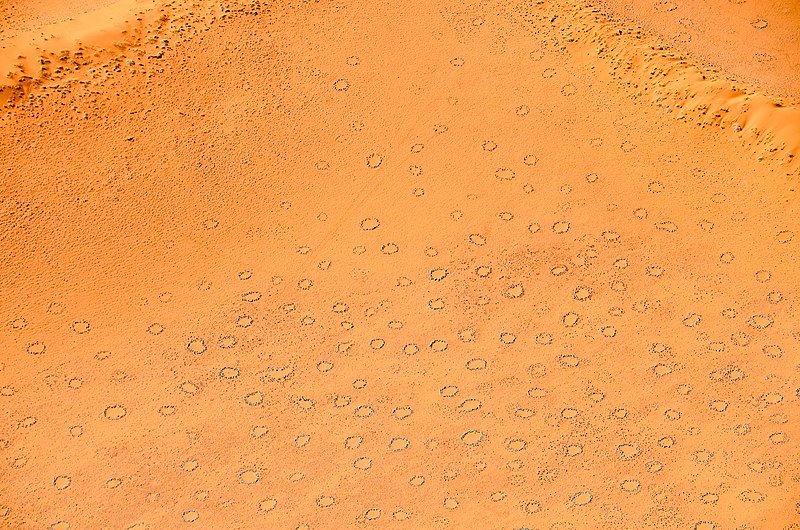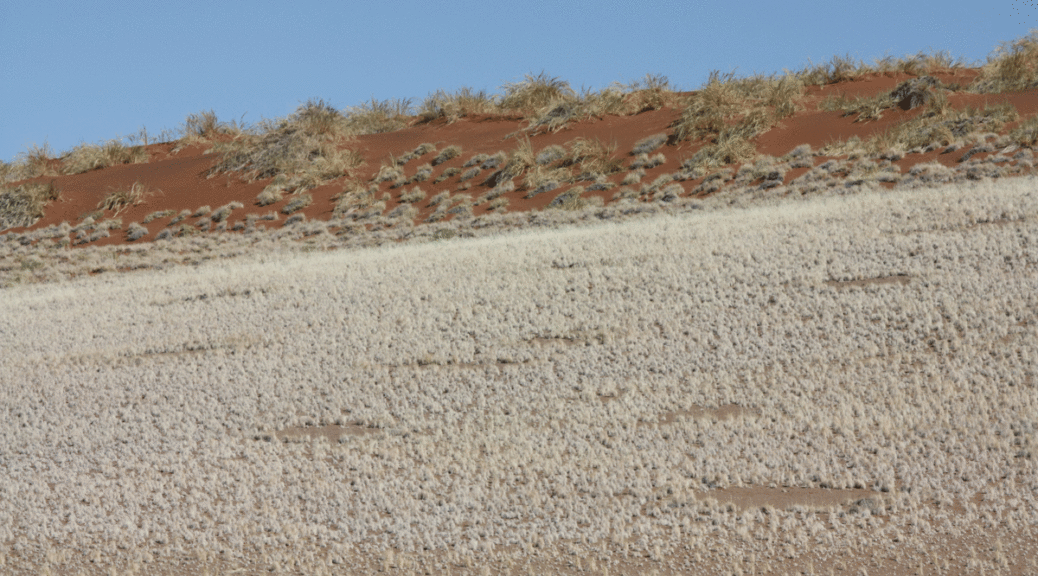Researchers say they are closer to solving the riddle of Africa’s so-called fairy circles, round patches of land where nothing grows. Found in the dry landscape of the Northern Cape, parts of Namibia and southern Angola, this natural phenomenon has intrigued scientists for years. By Karin Theron
It seems like the saga about the barren patches of land known as fairy circles continues. Tracks4Africa reported in 2017 how this mystery has been baffling scientists for decades. Now new research claims to have proven one of the earlier theories previously discounted; the Melkbos plant is indeed the culprit!
Read: Are they really fairy circles?
Changing the soil chemistry
Previously a theory that the soil is poisoned by the Damara Melkbos (Euphorbia damarana) was discounted. Researchers found that certain desert plants, like annual rye grass (Lolium multiflorum), flourish under them.
Euphorbia species are roundish, succulent shrubs with a milky latex that is highly poisonous. Upon dying, the plants leave behind compounds in the soil that inhibit vegetation growth for decades.

The new study, done by Professor Marion Meyer from the University of Pretoria’s Department of Plant and Soil Sciences, included two species of Euphorbia (E. damarana and E. gummifera). Due to a lack of scientific evidence for previous theories, Professor Meyer started a multidisciplinary study in 2015 on the effect of Euphorbia species on fairy circle soil chemistry and water.
Soil chemical, phytochemical (chemicals of plant origin) and GIS spatial patterning evidence point to these plants as the likely cause for the natural phenomenon. The study revealed that sand coated with the milky latex is water repellent. What’s more, soil from fairy circles and taken from under decomposing Melkbos plants is very similar in phytochemistry. Historical aerial imagery showed that in a population of 406 Melkbos plants, 134 were replaced by the barren circles over a 50-year period.

Further investigation
The good news is that fairy circles are not permanent. In the course of decades or even centuries, with occasional rain the toxicity within the circles will slowly leach away. Seedlings will survive for longer periods in older fairy circles until they are eventually fully established. At this stage the fairy circle will no longer be visible as it will have been covered by new growth.
Clearly this is not the last say on the matter. Further research is now in progress in areas that have many fairy circles but where big populations of Melkbos are currently not present, like in the NamibRand Nature Reserve and Marienfluss. This research will focus on DNA analyses of soil and ancient samples of plant pollen.
You can read the full study report in BMC Ecology.
Main blog image by Karin Theron.

